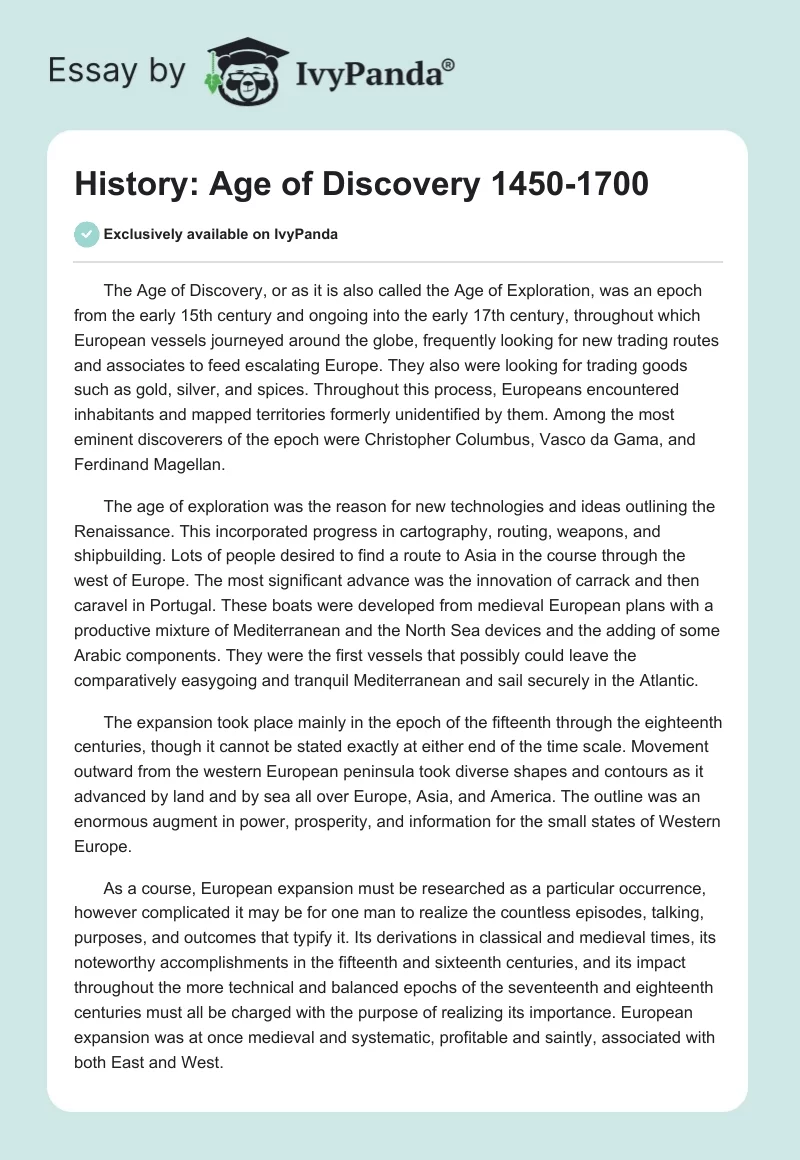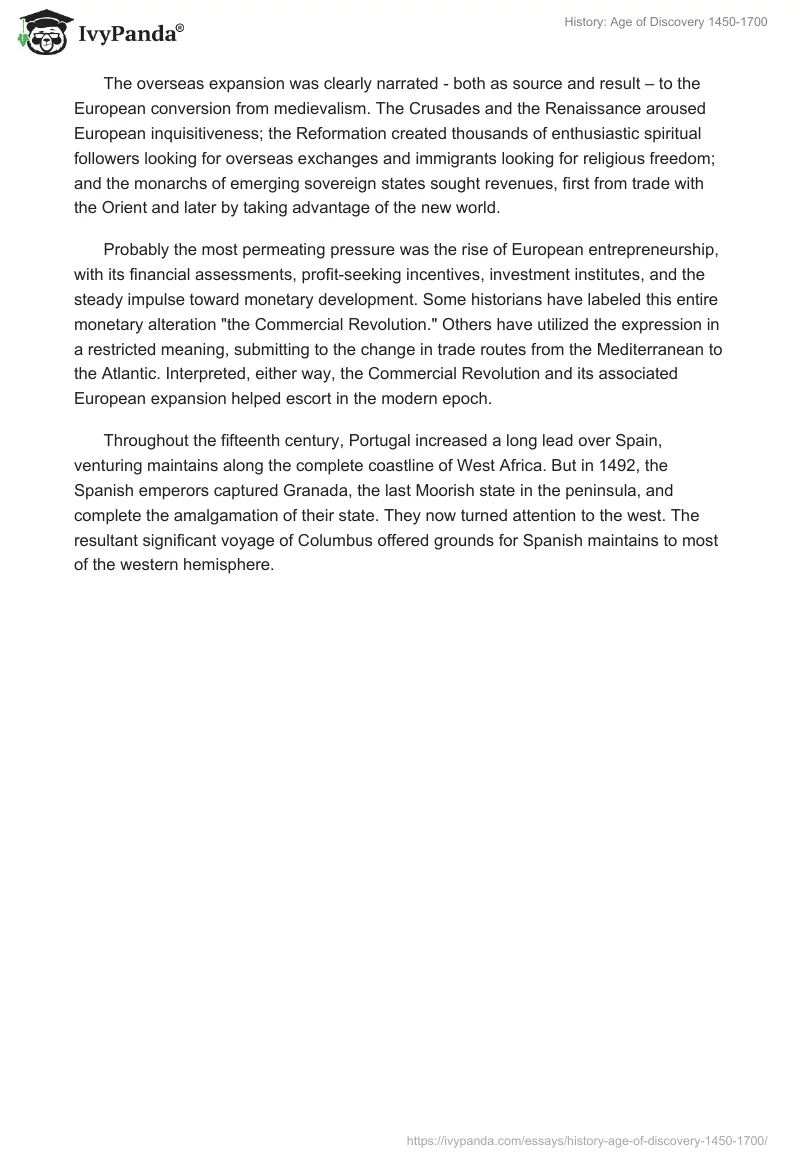The Age of Discovery, or as it is also called the Age of Exploration, was an epoch from the early 15th century and ongoing into the early 17th century, throughout which European vessels journeyed around the globe, frequently looking for new trading routes and associates to feed escalating Europe. They also were looking for trading goods such as gold, silver, and spices. Throughout this process, Europeans encountered inhabitants and mapped territories formerly unidentified by them. Among the most eminent discoverers of the epoch were Christopher Columbus, Vasco da Gama, and Ferdinand Magellan.
The age of exploration was the reason for new technologies and ideas outlining the Renaissance. This incorporated progress in cartography, routing, weapons, and shipbuilding. Lots of people desired to find a route to Asia in the course through the west of Europe. The most significant advance was the innovation of carrack and then caravel in Portugal. These boats were developed from medieval European plans with a productive mixture of Mediterranean and the North Sea devices and the adding of some Arabic components. They were the first vessels that possibly could leave the comparatively easygoing and tranquil Mediterranean and sail securely in the Atlantic.
The expansion took place mainly in the epoch of the fifteenth through the eighteenth centuries, though it cannot be stated exactly at either end of the time scale. Movement outward from the western European peninsula took diverse shapes and contours as it advanced by land and by sea all over Europe, Asia, and America. The outline was an enormous augment in power, prosperity, and information for the small states of Western Europe.
As a course, European expansion must be researched as a particular occurrence, however complicated it may be for one man to realize the countless episodes, talking, purposes, and outcomes that typify it. Its derivations in classical and medieval times, its noteworthy accomplishments in the fifteenth and sixteenth centuries, and its impact throughout the more technical and balanced epochs of the seventeenth and eighteenth centuries must all be charged with the purpose of realizing its importance. European expansion was at once medieval and systematic, profitable and saintly, associated with both East and West.
The overseas expansion was clearly narrated – both as source and result – to the European conversion from medievalism. The Crusades and the Renaissance aroused European inquisitiveness; the Reformation created thousands of enthusiastic spiritual followers looking for overseas exchanges and immigrants looking for religious freedom; and the monarchs of emerging sovereign states sought revenues, first from trade with the Orient and later by taking advantage of the new world.
Probably the most permeating pressure was the rise of European entrepreneurship, with its financial assessments, profit-seeking incentives, investment institutes, and the steady impulse toward monetary development. Some historians have labeled this entire monetary alteration “the Commercial Revolution.” Others have utilized the expression in a restricted meaning, submitting to the change in trade routes from the Mediterranean to the Atlantic. Interpreted, either way, the Commercial Revolution and its associated European expansion helped escort in the modern epoch.
Throughout the fifteenth century, Portugal increased a long lead over Spain, venturing maintains along the complete coastline of West Africa. But in 1492, the Spanish emperors captured Granada, the last Moorish state in the peninsula, and complete the amalgamation of their state. They now turned attention to the west. The resultant significant voyage of Columbus offered grounds for Spanish maintains to most of the western hemisphere.


